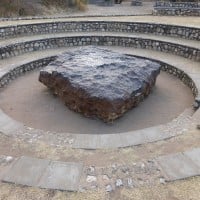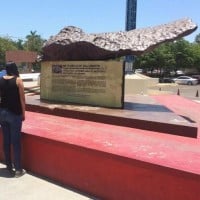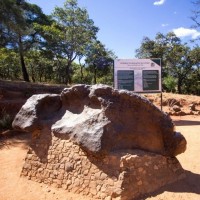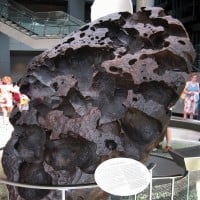Largest Meteorites on Earth

It was discovered in 1920 in Namibia. The main mass is estimated at more than 60 tonnes and because of its large mass, it has never been moved from where it fell. Hoba is a tabloid body of metal - it's composed of about 84% iron and 16% nickel, with traces of cobalt.
Largest meteorite. It's also located in Namibia and has become a tourist attraction
Found in 1894 in Greenland. The "Ahnighito" fragment is weighing 31 metric tons (31 long tons; 34 short tons). Inuit living near the meteorites used them as a source of metal for tools and harpoons.
Gancedo fragment weighs 30.8 tons. It was found in Argentina. The craters, containing iron masses, were reported in 1576 but were already well known to the aboriginal inhabitants of the area. The craters' age is estimated as 4,000-5,000 years.
Mass: 28,840 kg (63,580 lb).
It's one of the fragments of the Campo del Cielo meteorite. The crater field contains at least 26 craters, the largest being 115 by 91 metres (377 by 299 ft).

It is an iron meteorite weighing between 20 and 22 tonnes, found in 1863 in Mexico.
(Alternative names - Sinaloa, Ranchito)
"The Agpalilik meteorite, also known as the Man, weighs about 20 metric tons (20 long tons; 22 short tons), and it is currently on display in the Geological Museum of the University of Copenhagen, Denmark." - wiki

Mbozi is an iron meteorite found in 1930 in Tanzania and weighs an estimated 16 metric tons (16 long tons; 18 short tons).

Discovered in 1902, it weighed more than 16 tonnes when found in Oregon, US.